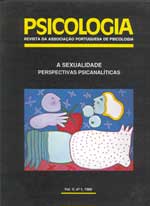O primeiro amor
DOI:
https://doi.org/10.17575/rpsicol.v5i1.823Abstract
The author starting from a clinical vignette of a case of a young man with phobic symptoms but whose character was mainly obsessive, shows how the neurosis first became evident through a love experience in latency – his first exogamic attachment. After giving up this first love the patient falls into a depression, that later on is structured into an obsessive character disorder and colored by phobic symptoms. What remains from giving up the first love is submissiveness to the Super-ego (this last shown by the fact that the subject accuses himself and exculpates the mother-figure who is considered «not guilty»). The author sees in agreement with Roheim in neurosis more than the negative of a perversion. Neurosis in the adult is the negative of the childhood neurosis. Other solutions for the same conflict, besides the healthy adaptation to reality are: the maniac attitude, the depressive reaction (already described in the clinical vignette), homossexuality (mainly on those cases where narcissism has not been bypassed), a masochistic attitude (with erotisation of passivity and dependence).Downloads
Download data is not yet available.
Downloads
How to Cite
Coimbra de Matos, A. (1986). O primeiro amor. PSICOLOGIA, 5(1), 39–43. https://doi.org/10.17575/rpsicol.v5i1.823
Issue
Section
Thematic issue


